This vegan butternut squash pie is as smooth and flavorful as pumpkin pie but with the addition of brown sugar and vanilla it brings something different to the table.
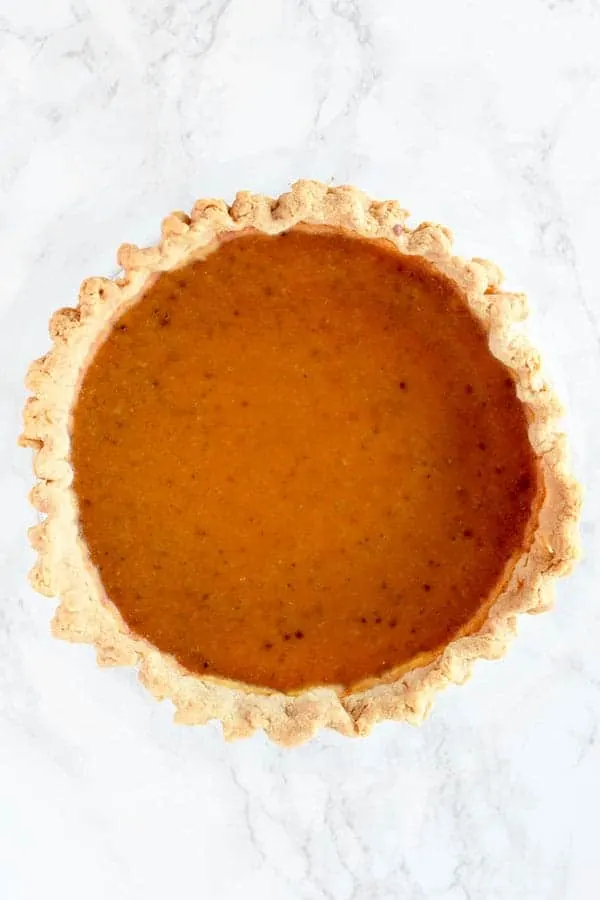
I started making butternut squash pie after moving to Israel when I was desperate for a replacement to canned pumpkin pie filling. After some research I discovered butternut squash was my best alternative and the pie came out perfect.
However, I got to thinking. If I was going to already make a pie with butternut squash instead of pumpkin, maybe I could try tweaking the recipe a little too. No surprise, the pie came out great!
Don't forget to checkout these other dairy free desserts!
WHY MAKE BUTTERNUT SQUASH PIE
The main benefit to making butternut squash pie instead of canned pumpkin pie filling is that it's more natural. You don't need to worry about the metal cans or preservatives.
The other benefit is that it's something a little different. If you've ever read my pumpkin pie post, you know that you can make a great pumpkin pie by using butternut squash.
The reason for this is because the Dickinson pumpkin used for fillings is very genetically similar to a butternut squash. They have the same smooth orange flesh and creamy texture when roasted.
So, to make this pie a little different I added brown sugar and vanilla.
This pie makes a very nice addition to Thanksgiving spreads and to Thanksgiving Recipes in your collection.
THE FILLING
Like a pumpkin pie, the hardest part of making a butternut squash pie is the custard filling.
A custard is defined as a “milk or cream cooked with egg yolk to thicken it” and it can be a little tricky to make.
If you’ve ever tried to make pumpkin pie before you may have gotten cracks in it or served it fallen and maybe even a little wet.
The first step, to avoiding extra liquid on top, is to make sure the custard isn’t too thin. To do this I add a little bit of corn or potato starch.
Next, make sure to bake it at a low temperature.
The pie usually falls because it rises too high when baking, due to the higher temperature, then as it cools, it falls.
By baking it on a lower temperature it stays more even and doesn’t fall.
Lastly, cracks are due to over-baking or baking too close to the heat source.
To avoid this, bake on the middle rack and turn off the heat as soon as the pie has set in the middle.
However, since this is a vegan butternut squash pie, it is not prone to these problems.
Sugar
The primary role of sugar is to be a sweetener. However, sugar also contributes to the tenderness and moistness of the baked good by absorbing and retaining moisture and helps create the golden brown color when baking as it caramelizes.
Recipes with more sugar often result in softer, moister textures. However, I learned the hard way that too much sugar leads to a sticky mess.
When it's heated, sugar caramelizes, resulting in a rich, complex flavor and a brown color. This adds both flavor and color to baked goods and is also the process in which caramel sauce, dulce de leche, caramel candies, and regular candies are made.
When used in recipes containing yeast, the sugar is eaten by the yeast, producing carbon dioxide and causing the dough to rise.
Sugar also acts as a preservative in jams, jellies, and fruit preserves by reducing water activity and preventing microbial growth.
There are many different types of sugar, including white sugar, brown sugar, vanilla sugar, powdered sugar, turbinado sugar, and demerara sugar.
When a recipe calls for “sugar” without specifying anything else, it's referring to regular white sugar.
White Sugar
White sugar (sometimes called granulated sugar, table sugar, or white granulated sugar) is made of either beet sugar or cane sugar, which has undergone a refining process.
It is the easiest to find and most commonly used.
Brown Sugar
Brown sugar is white sugar with molasses added to it.
It is commonly used in chocolate chip cookie recipes, and it’s rare for a recipe that calls for brown sugar not to also call for white sugar as well.
When a recipe calls for “brown sugar” but doesn’t specify what type (light or dark), it is referring to light brown sugar.
In my recipes, you can use whatever type of brown sugar you have on hand, whether it is dark brown sugar, light brown sugar, or demerara sugar - which is very common in Israel.
Just keep in mind that the flavor and color will be slightly different, depending on what you choose to use.
Turbinado Sugar
Turbinado sugar is better known as "raw sugar." But, despite this name, the sugar is not really “raw.”
Instead, it's partially refined sugar that retains some of the original molasses.
The term "raw sugar" may also give off the impression that it is somehow healthier.
In reality, turbinado sugar is nutritionally similar to white sugar.
Demerara Sugar
Demerara sugar is very popular in Israel and is especially delicious in tea, but is also used for baking.
Unlike white sugar, demerara sugar undergoes minimal processing and retains some vitamins and minerals.
However, it is still not much healthier than white sugar.
Vanilla Sugar
Vanilla sugar is not very common in the States. However, it is common in Israel and parts of Europe.
This is sugar that sat for an extended period of time with vanilla beans, giving it a vanilla flavor.
Caster Sugar
This type of sugar is common in the United Kingdom.
It has a grain finer than white (granulated) sugar and larger than powdered sugar.
Caster sugar is often called for in recipes for delicate baked goods like meringues, souffles, and sponge cakes.
You can use a 1:1 conversion rate between caster sugar and white (granulated) sugar.
Powdered sugar
Powdered sugar, sometimes known as confectioners’ sugar, is a sugar with a powdered texture.
This sugar is rarely used for baking. Instead, it is used for dusting desserts and making frosting, icing, and glazes.
In some countries, you can also find powdered vanilla sugar.
It is made the exact same way regular vanilla sugar is made. However, the sugar used is powdered instead of granulated.
Vanilla Extract vs Vanilla sugar
In my recipes, I don’t specify what kind of vanilla to use.
The reason for this is that in the States, vanilla extract is exclusively used.
Meanwhile in Israel, along with many European countries, vanilla sugar is common.
In most, if not all recipes, both vanilla extract and vanilla sugar can be used.
In recipes where vanilla sugar can be used instead of extract, you can replace them 1:1.
Replacing Sugar with Honey
If you’d prefer to use honey instead of sugar, you can do so with pretty good results.
Honey can be two or even three times as sweet depending on the honey, so for every 1 cup of sugar, you can use ½ to ⅔ cup honey.
Since honey adds liquid, you need to remove some to balance it out. For every cup of honey, remove a ¼ cup of liquid.
Also, it burns faster than granulated sugar, so you want to lower the baking temperature by 25 F. In addition, check it early and often to avoid burning or overbaking.
How to Store Sugar
Sugar should be stored in an airtight container to prevent clumping and moisture absorption, and kept in a cool, dry place.
BROWN SUGAR
What we call brown sugar is essentially white sugar that has had molasses added back to it.
It should not be confused with raw sugar or demerara, which are their own types of sugar.
You can easily substitute brown sugar or even make brown sugar.
Both dark and light brown sugar can easily be made at home if you have a little white sugar and molasses.
It is commonly used in chocolate chip cookie recipes, and it’s rare for a recipe that calls for brown sugar not to also call for white sugar as well.
When a recipe calls for “brown sugar” but doesn’t specify what type (light or dark), it is referring to light brown sugar.
DARK BROWN SUGAR
Dark brown sugar can be made with 1 cup white granulated sugar and 2 tablespoons molasses.
Add both ingredients into a bowl and mix with a fork until completely mixed.
LIGHT BROWN SUGAR
Light brown sugar can be made with 1 cup white granulated sugar and 1 tablespoon molasses.
Add both ingredients into a bowl and mix with a fork until completely mixed.
DEMERARA
Demerara is popular in Israel and is easier to find than light brown sugar. It is a type of cane sugar with a nice toffee flavor and can be used in place of brown sugar.
HOW TO SUBSTITUTE DARK AND LIGHT BROWN SUGAR
DARK BROWN SUGAR
Dark Brown Sugar can be made with 1 cup of light brown sugar and 1 tablespoon molasses.
Add both ingredients into a bowl and mix with a fork until completely mixed.
LIGHT BROWN SUGAR
Light Brown sugar can easily be replaced in a recipe with half dark brown sugar and half white granulated sugar.
DOES THE TYPE OF BROWN SUGAR YOU USE REALLY MATTER?
Using the wrong brown sugar will change the flavor and likely the color.
Dark brown sugar has more molasses, which will give it a deeper, more complex flavor that’s closer to toffee or caramel.
Light brown sugar is more subtle, which is sometimes ideal.
However, I tend to use what's on hand, which for me means dark brown sugar in Israel and light brown in the States.
I also happen to love the extra flavor dark brown sugar gives, so I like using it even if I have both on hand.
How to Store Brown Sugar
Store brown sugar in an airtight container to maintain its moisture and prevent it from hardening.
Types of Vanilla
Vanilla comes from a pod commonly known as a “vanilla bean”, which comes from the vanilla orchids.
Vanilla pods have been used for flavoring since the Aztecs and was introduced to Europe by a Spanish conquistador, along with cocoa.
Vanilla Extract
Vanilla extract is created by soaking vanilla beans in alcohol for some time. This is the most commonly used type of vanilla.
Vanilla Sugar
Vanilla sugar is common in Europe and some parts of the Middle East, like Israel.
It is made from vanilla beans sitting in sugar, vanilla bean powder mixed with sugar, or sugar mixed with vanilla extract.
In some countries, like Italy, you can also find vanilla powdered sugar, which is used for confections.
Vanilla Paste
Vanilla paste is generally a specialty item. It is a thick paste that contains a blend of the scraped-out vanilla pod seeds and vanilla extract.
You can use it as you do vanilla extract and it will leave flakes of vanilla bean like you see in vanilla bean ice cream.
Imitation Vanilla
Imitation Vanilla, otherwise known as artificial vanilla or vanilla essence, is made from synthetic vanilla.
This is the compound that naturally occurs in vanilla beans and gives it its flavor.
Can I use imitation vanilla?
Many will tell you that you should use high quality vanilla, just like they say you should use the best cocoa.
However, most of us will probably not be willing to pay the hefty price that comes with exceptionally high-quality ingredients.
Overall, vanilla is very expensive, so the extract is as well.
So, if you’re not going to get regular quality vanilla extract, you might as well use imitation vanilla.
Can vanilla extract be used as a substitute for vanilla beans?
Yes, vanilla extract can be used as a substitute for vanilla beans. Use about 1 teaspoon of vanilla extract for each inch of vanilla bean.
How to Store Vanilla
Pure vanilla extract and other vanilla products should be kept away from heat and light, and should be stored in an airtight container in a cool, dark place.
Blind Baking The Crust
Blind baking is a technique used to help prevent the crust from becoming soggy and has a crisp texture.
How to Blind Bake a crust
- Cover the crust in the pie pan with baking paper or tin foil
- Fill it with pie weights, sugar, beans, or pennies and bake at 375°F or 190°C for 30 minutes
- Remove the filling and bake for another 10 minutes to brown the bottom
Adjusting for a Convection Oven
Convection ovens blow the hot air around, producing around 25 to 30 percent more heat.
Since convection ovens produce more heat, you need either lowering the temperature or shortening the cooking time to compensate.
When recipes specify temperatures and cooking times, it’s for conventional ovens, unless specified otherwise.
A simple rule to follow is to lower the temperature by 25ºF or 14ºC when baking cookies and pies, and 50ºF or 28ºC when roasting meat and poultry. Some convection ovens offer separate settings for baking and for roasting.
You can also leave the temperature the same and instead, shorten the cooking time by 25 percent. For example, if your recipe calls for 60 minutes in the oven, check the food after 45 minutes instead.
However, keep in mind, some convection ovens actually make a heat adjustment for you. That is, if you set a convection oven for 350ºF, it might actually set itself to 325ºF to compensate. So, check your manual before making adjustments.
Vegan Butternut Squash Pie
As mentioned above, a custard requires milk or cream. Usually pumpkin pie calls for evaporated milk. Clearly, this is not possible when making a vegan pumpkin pie.
A good substitute is coconut milk due to its cream like consistency. Other milks alternatives are too thin. Don't worry though, you cannot taste the coconut at all.
If you do not want to use coconut milk you can use a dairy free whipping cream.
My Mom made her pumpkin pie this way long before I heard of coconut milk.
However, since dairy free whipping cream is sweetened, cut the sugar by half a cup.
And to replace the eggs, a mixture of cornstarch and water works beautifully.
Can It Be Stored at room temperature?
No. It has a custard filling, so it needs to be refrigerated.
HOW TO STORE
Let cool to room temperature. Cover loosely with plastic wrap or foil. Refrigerate for up to 3 to 4 days.
How to Freeze
Let cool Let cool to room temperature. Wrap in plastic wrap until tightly sealed. Then wrap in a layer of aluminum foil.
If you do not have plastic wrap and aluminum foil, place it in a resealable freezer bag.
Place on a level freezer shelf and freeze for up to 1 to 2 months. After this, the pie is still safe to eat but the quality begins to degrade.
Defrost
When you are ready to defrost the pie, transfer it to the refrigerator. Let thaw for at least 12 hours.
Vegan Butternut Squash Pie
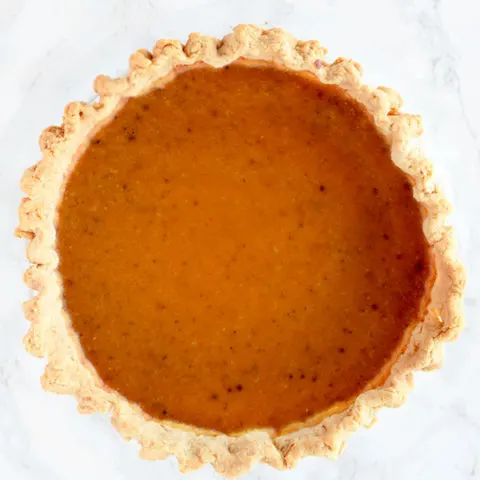
Pumpkin pie is the classic, but this vegan butternut squash pie is just as creamy and is enriched by a hint of vanilla and a touch of brown sugar.
Ingredients
- 2 tablespoons cornstarch
- ⅓ cup water
- 15 ounce butternut squash puree (425 grams)
- 12 ounce of full fat unsweetened coconut milk* (355 milliliter)
- 1 teaspoon vanilla
- ¾ cup white sugar (150 grams)
- ½ cup brown sugar, packed (110 grams)
- 1 tablespoon cornstarch or potato starch
- 1 teaspoon ground cinnamon
- ½ teaspoon salt
- ½ teaspoon ground ginger
- ¼ teaspoon ground cloves
- 1 unbaked 9-inch deep-dish pie shell
Instructions
- Preheat your oven to 325°F or 160°C.
- In a mixing bowl, place the cornstarch and then slowly whisk in the water until you don't have any clumps of cornstarch.
- Add butternut squash puree, coconut milk, vanilla, sugar, brown sugar, cornstarch or potato starch, cinnamon, salt, ginger, and cloves. Whisk together until well combined.
- Using a rubber spatula, pour the filling into a pie shell. Bake on the middle rack for 50 to 55 minutes or until the center has set.
- Cool on a wire rack until it reaches room temperature (about two hours). Refrigerate for 2 hours or overnight.
Recommended Products
Some of the links below are affiliate links, which means that if you choose to make a purchase, I will earn a small commission. This commission comes at no additional cost to you.
Nutrition Information:
Yield:
8Serving Size:
1Amount Per Serving: Calories: 182Total Fat: 3gSaturated Fat: 1gTrans Fat: 0gUnsaturated Fat: 1gCholesterol: 0mgSodium: 171mgCarbohydrates: 40gFiber: 1gSugar: 32gProtein: 1g
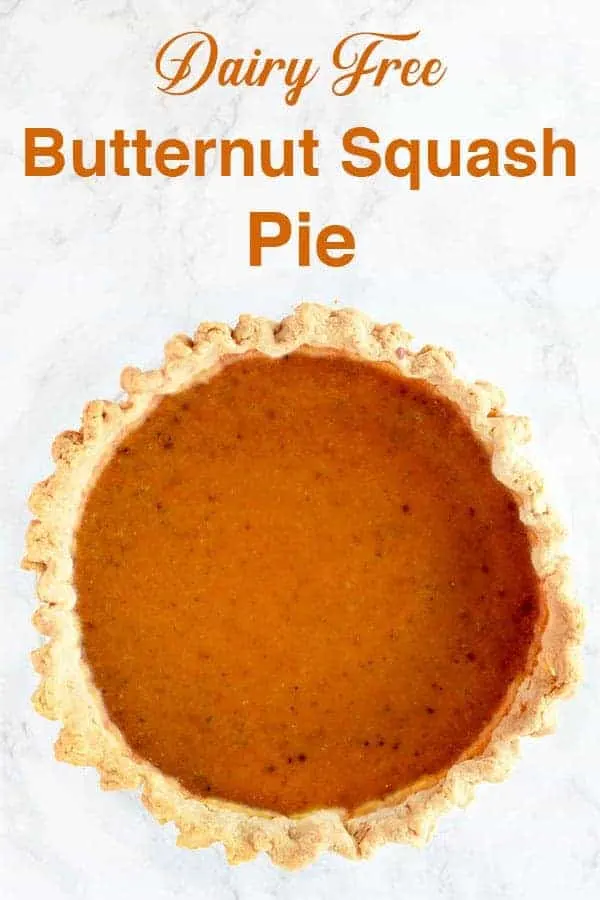

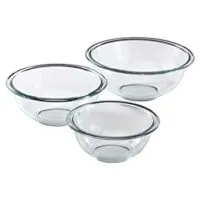
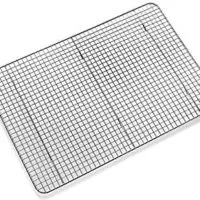
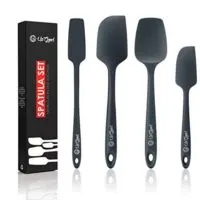
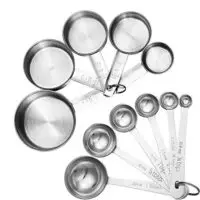
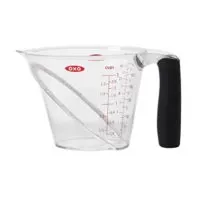
cv
Wednesday 19th of October 2022
The cornstarch is not mentioned in the instructions. Just assumed it was just a mistake & added it in. This pie turned out great! I only had coconut whipping cream so used that instead of coconut milk. Sooooo good!
ElissaBeth
Friday 4th of November 2022
I'm glad to hear you enjoyed it so much! Thanks for pointing out that somehow cornstarch was left out of the instructions, I fixed it :)
Rivka
Thursday 29th of October 2020
Hi, I love your recipes! Do you have any ideas for me to substitute cornstarch or potato starch? I'm not supposed to eat either... (food sensitivities)Thanks!
Julie Sadler
Friday 13th of November 2020
@ElissaBeth, You can also use Tapioca starch.
ElissaBeth
Friday 30th of October 2020
Aw thank you! I always love hearing that :) You should be able to use 3 tablespoons of flour instead.
Brittany
Wednesday 6th of November 2019
This recipe looks so amazing! I always have the problem of a soggy crust, but I'm excited to try your tips of blind baking the pie crust! Is butternut squash as sweet as pumpkin pie?
ElissaBeth
Wednesday 6th of November 2019
It is! And it has a touch of caramel flavor from the brown sugar :)